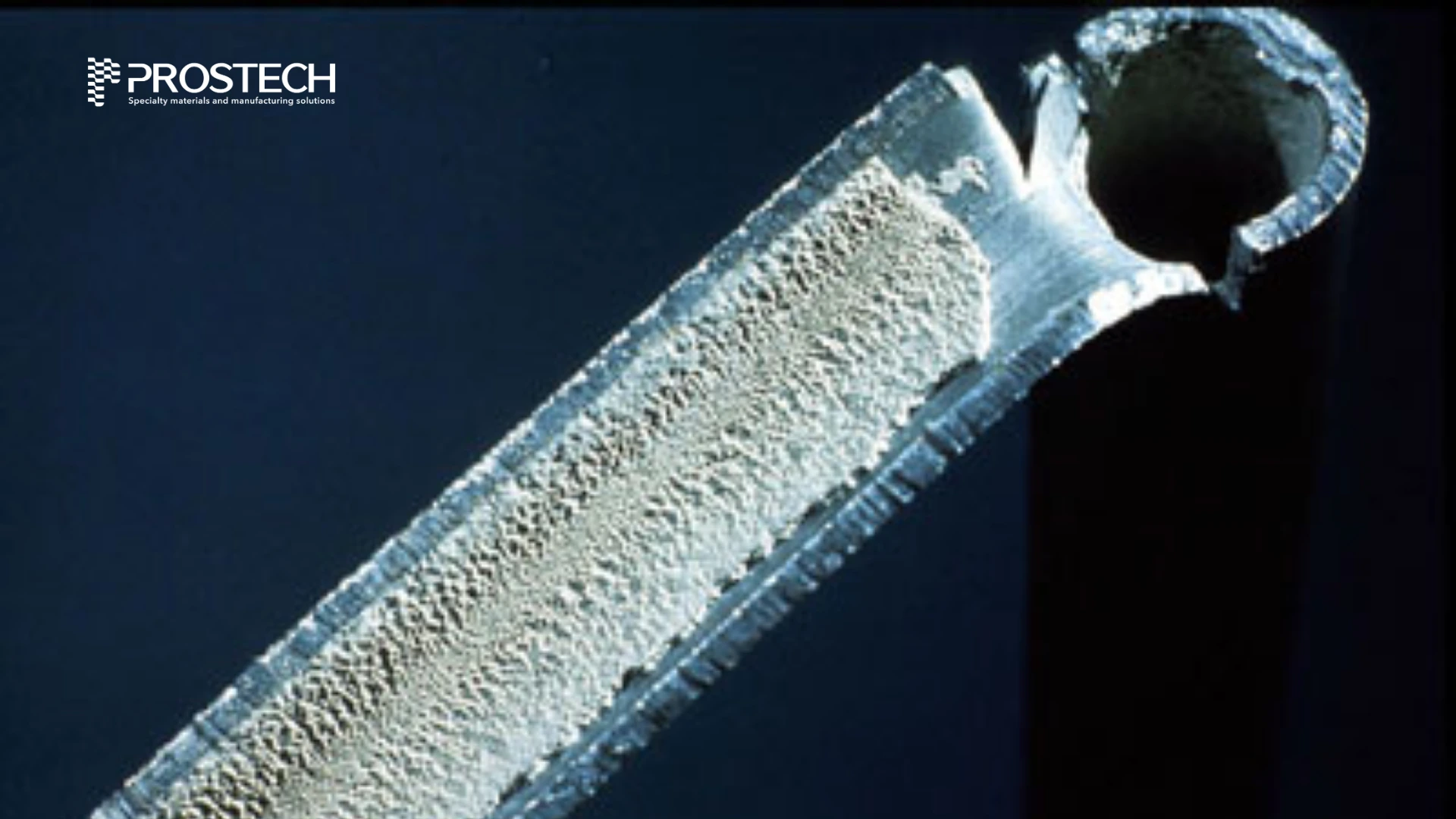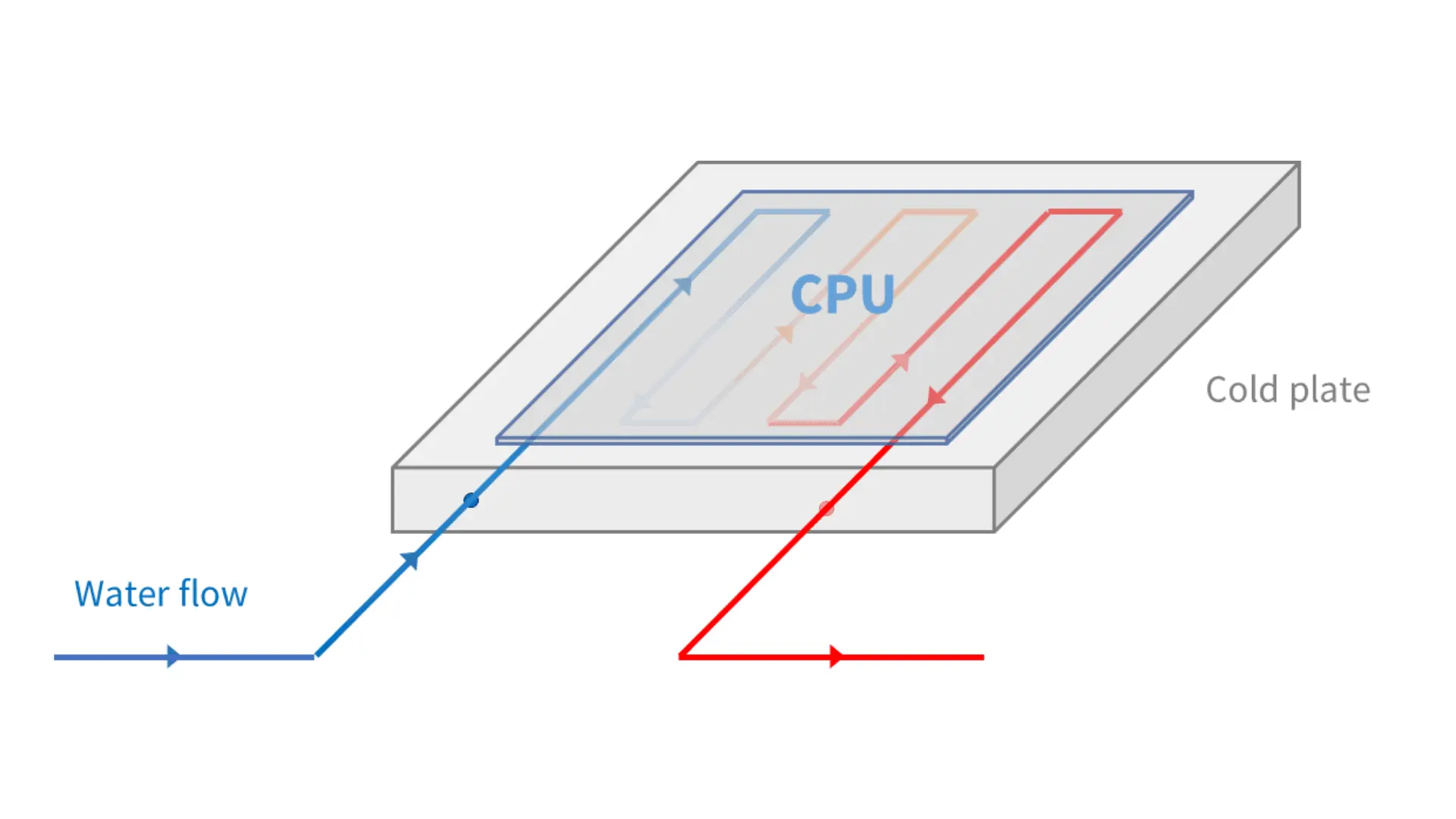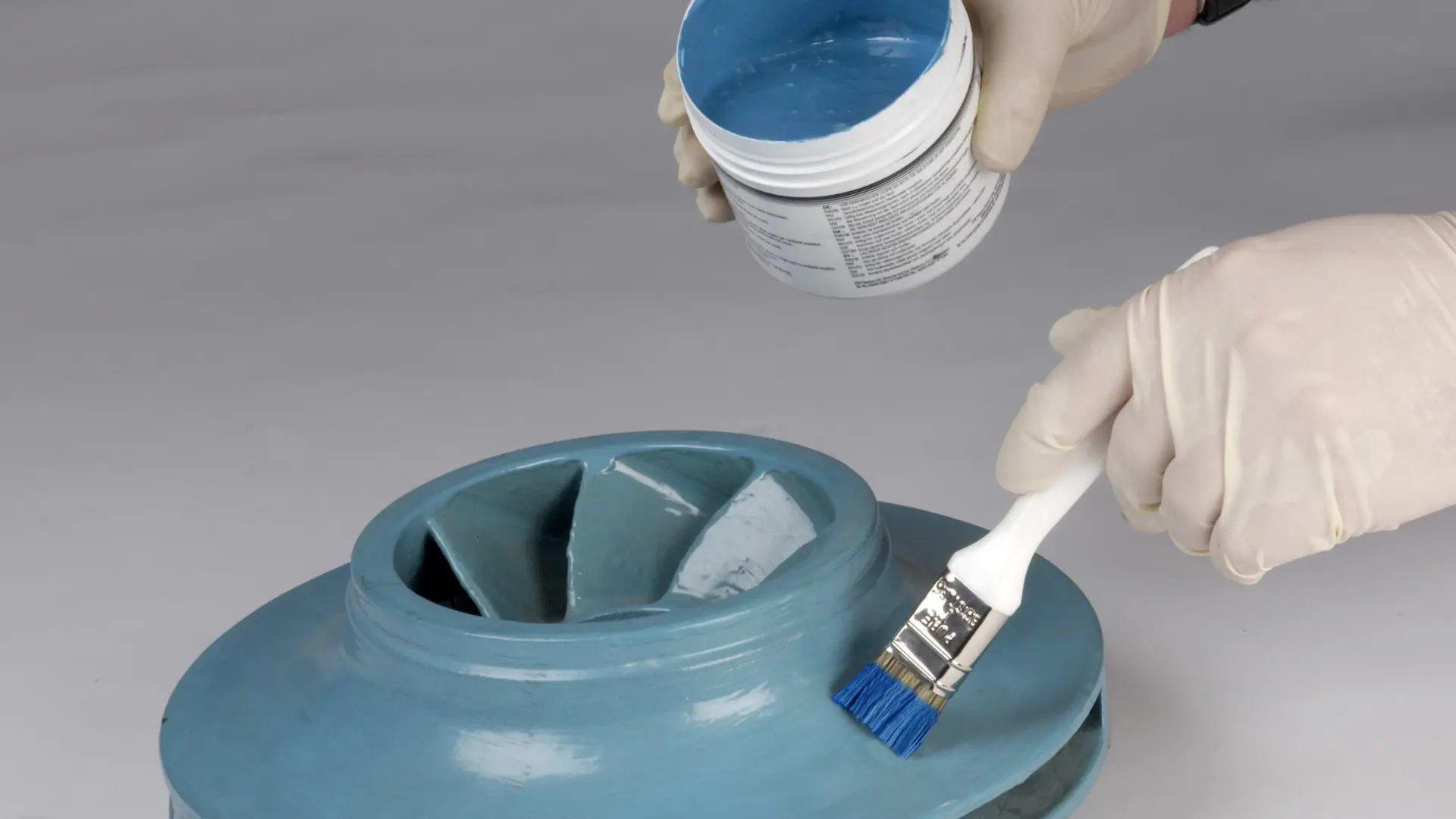A frequent challenge for manufacturers is the occurrence of air bubbles in adhesives. Though they may appear insignificant, these bubbles can greatly affect the strength, dependability, and visual quality of bonded materials. Understanding how adhesive air bubbles form, their possible impacts, and methods to prevent or reduce them is crucial for anyone working with adhesives.
What are Consequences of Air Bubbles
Structurally, air bubbles weaken the joint by creating voids that reduce its load-bearing capacity, posing safety risks in critical applications like aerospace or medical devices. They also act as stress concentrators, making bonds more susceptible to failure under mechanical loads or temperature changes.
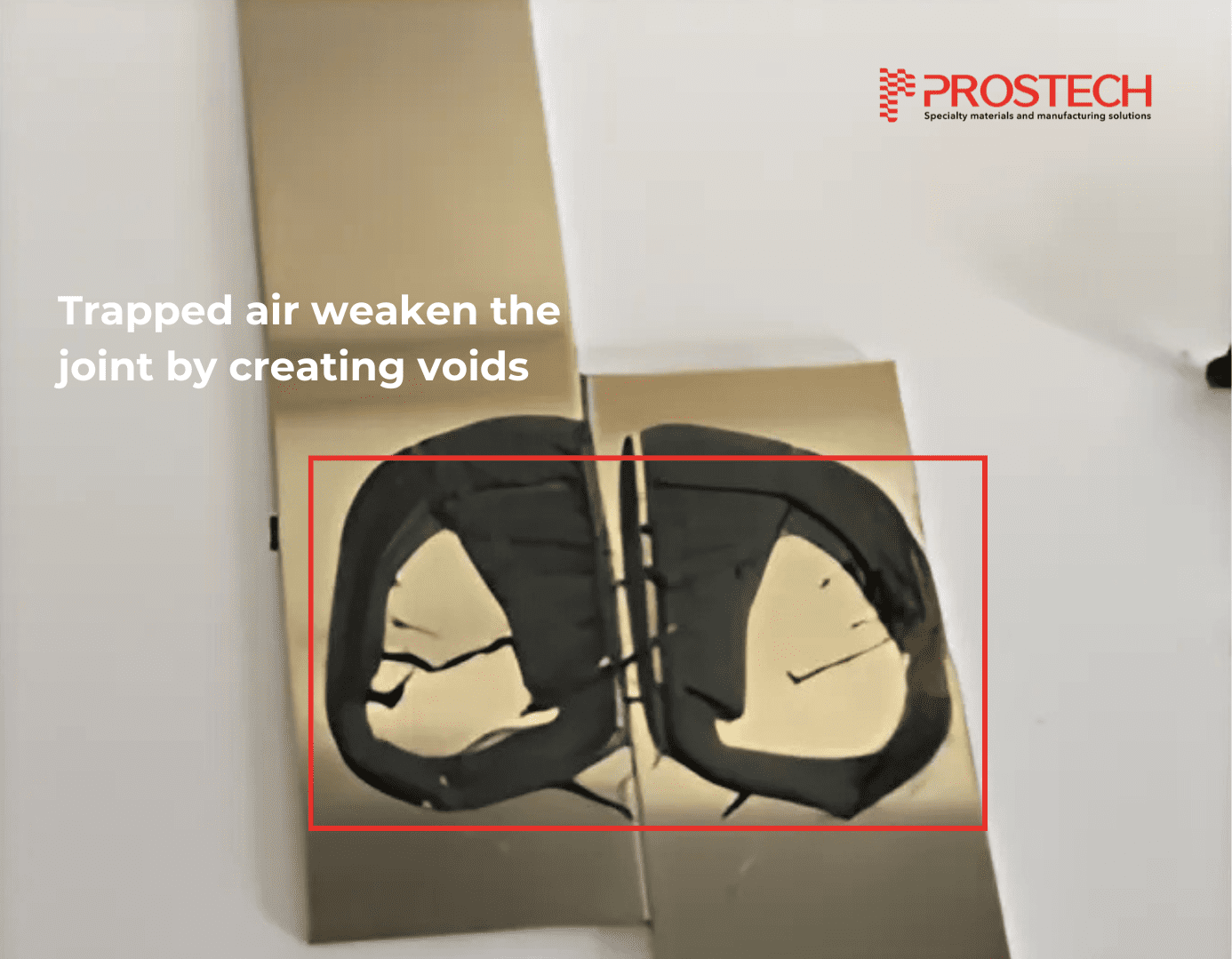

This issue is particularly problematic in industries that require precise resin-to-hardener ratios or use adhesives in large volumes. Trapped air can interfere with the chemical reaction between components, leading to incomplete curing and weaker bonds.
Aesthetically, visible bubbles can result in poor finishes, particularly in transparent or decorative applications, which diminishes product quality.
Furthermore, air bubbles reduce adhesive coverage by occupying space where adhesive should be, leading to uneven bonds and compromised airtight or watertight seals.
These issues not only affect the performance and appearance of bonded materials but also increase production costs. Defects caused by air bubbles often necessitate rework, replacements, or more extensive quality control measures. Ultimately, air bubbles undermine both the durability and functionality of adhesives, making their prevention essential for maintaining product integrity and efficiency.
Why do air bubbles form?
Understanding the root causes of air bubbles is the first step to solving the issue. Some of the most common reasons include:
- Interactions between adhesive components: Certain adhesives, especially two-part systems like epoxy or polyurethane, can produce gas during mixing due to chemical reactions between the components.
Related article: How to overcome the disadvantages of AB glue? - Mixing Process: In two-part adhesive systems, combining the resin and hardener can easily trap air if not done carefully. Manual mixing, especially in bulk quantities, poses a challenge as achieving a thorough blend without incorporating air is difficult. Stirring or agitating the mixture during preparation introduces air, and without proper degassing, these bubbles remain trapped as the adhesive cures. High-speed mixing further exacerbates the problem by increasing turbulence, making it essential to adopt controlled mixing techniques or use vacuum systems to minimize air entrapment.Need help optimizing your mixing process or selecting the right equipment? Contact us today for expert consultation and ensure your adhesive applications are bubble-free and efficient!
- Application Technique: Inconsistent or improper application methods, such as uneven spreading or overly rapid dispensing, can trap air pockets. Using manual dispensing tools instead of precision equipment may lead to variable results.
- Viscosity and Material Properties: Highly viscous adhesives are more prone to air entrapment due to their resistance to flow. Adhesives with a rapid curing time may not allow sufficient time for air bubbles to escape.
- Surface Conditions: Irregular, porous, or contaminated surfaces can trap air when the adhesive is applied. Moisture on the bonding surfaces can react with certain adhesives, creating gas bubbles.
- Environmental Factors: Temperature changes during storage or application can cause trapped air to expand. High humidity can also affect adhesive formulations, particularly those sensitive to moisture.
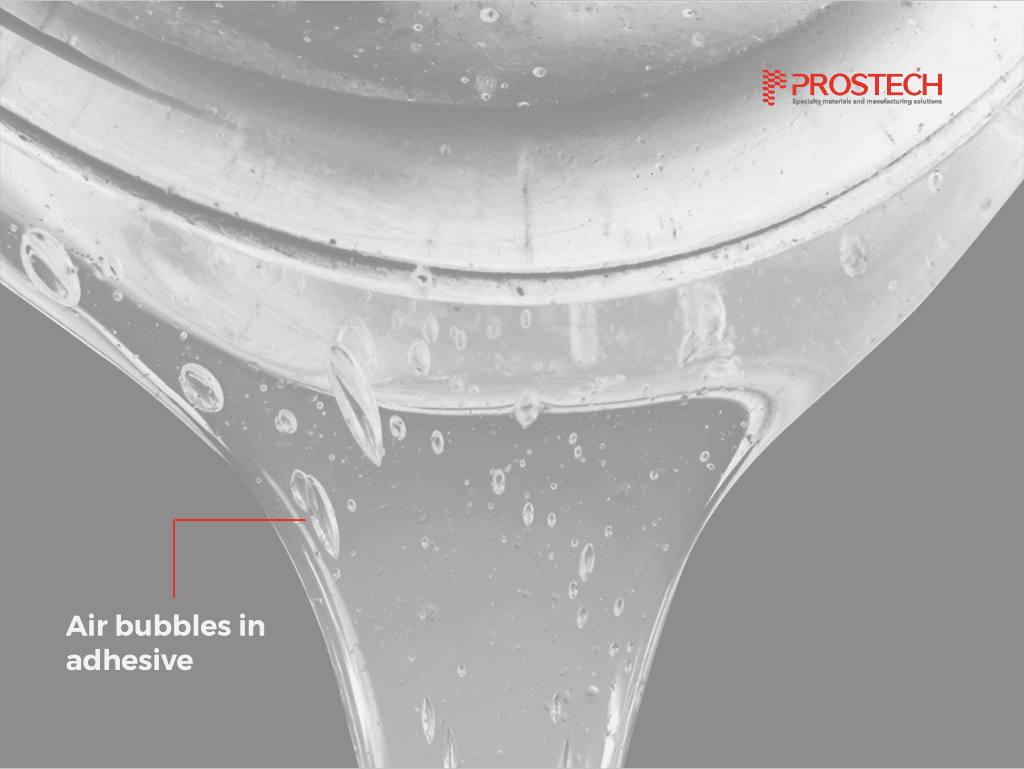

Preparing Surfaces and Controlling Environmental Factors
Proper surface preparation and environmental control are essential steps to prevent air bubbles from forming in adhesives during application. Surfaces must be clean, dry, and free of contaminants like dust, grease, or moisture, as these can trap air or interfere with adhesive bonding. Irregular or porous surfaces should be treated or primed to create a smooth, even base for the adhesive. Additionally, controlling environmental factors such as temperature and humidity is crucial. Extreme temperatures can cause air pockets to expand, while high humidity can introduce moisture that reacts with certain adhesives, generating bubbles. Maintaining stable, recommended conditions during storage, mixing, and application ensures optimal adhesive performance and minimizes the risk of air bubbles.
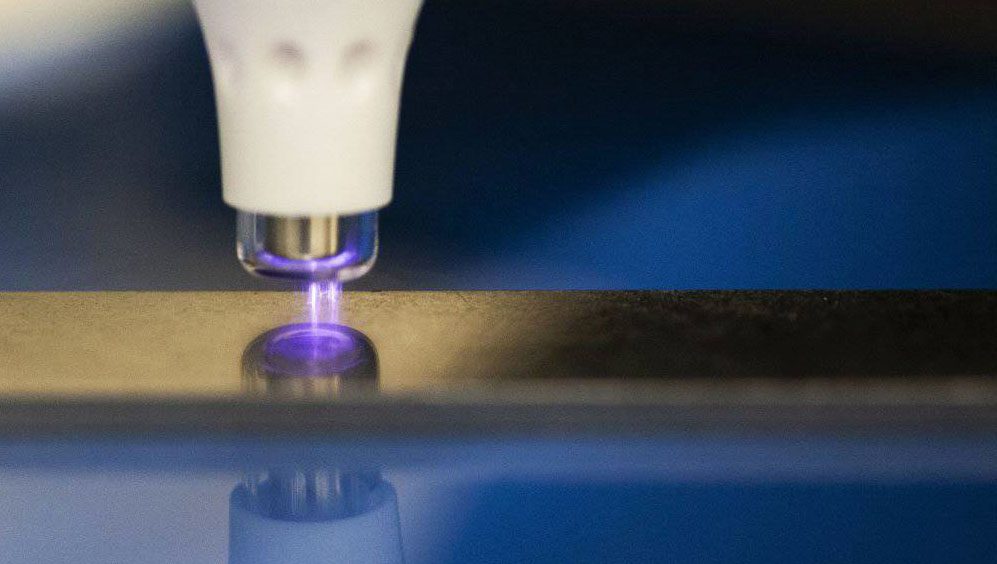

Prostech’s surface treatment solution
Preventing Air Entrapment During Adhesive Application
Preventing air bubbles is always better to avoid bubbles than to remove them later, and this begins with proper application techniques.
A common mistake is shaking or vigorously agitating the adhesive container before use, which introduces air into the mixture. Instead, adhesives should be handled gently to minimize unnecessary air pockets.
Controlled application methods also play a crucial role in preventing air entrapment. Applying adhesive in a zigzag pattern or as a central bead across the bonding surface helps ensure even distribution and reduces the chance of bubbles being trapped between the adhesive and the substrate.


Additionally, providing sufficient curing time is essential. Applying pressure or clamping the bond before the adhesive is fully cured can draw air into the joint as the adhesive contracts, leading to weak spots. Allowing adequate curing time ensures a strong, bubble-free bond.
To further minimize the risk of air bubbles, adhesive cartridges with static mixing nozzles are designed to mix and dispense adhesives with precision. These nozzles ensure the correct ratio of components and thorough mixing as the adhesive is applied, reducing the likelihood of air becoming trapped.
Removing Air Bubbles from Mixed Adhesives
Even with careful handling, air bubbles can still form during the adhesive mixing process. Thankfully, several effective techniques can remove these bubbles before application:
- Heat Application: Applying gentle heat to the adhesive mixture accelerates the removal of air bubbles. The heat causes the trapped air to expand and rise to the surface, where the bubbles burst and release the air. This approach is particularly helpful for adhesives that tolerate heat during preparation.
- Vibrating Tables: Vibrating tables are widely used to force air bubbles in adhesive mixtures to rise to the surface. The vibrations help trapped air escape, allowing the bubbles to burst naturally or be manually removed. This method is especially effective for handling larger adhesive batches.
- Vacuum Chambers: For highly effective air bubble removal, vacuum chambers are a preferred solution. By placing the adhesive mixture in a vacuum environment, the reduced atmospheric pressure forces trapped air to expand and escape. This technique is ideal for critical applications where even the smallest voids could compromise the adhesive’s performance.
In large-scale production settings, inline degassing systems provide a continuous solution to prevent air bubbles, ensuring consistent and high-quality adhesive application across multiple batches.
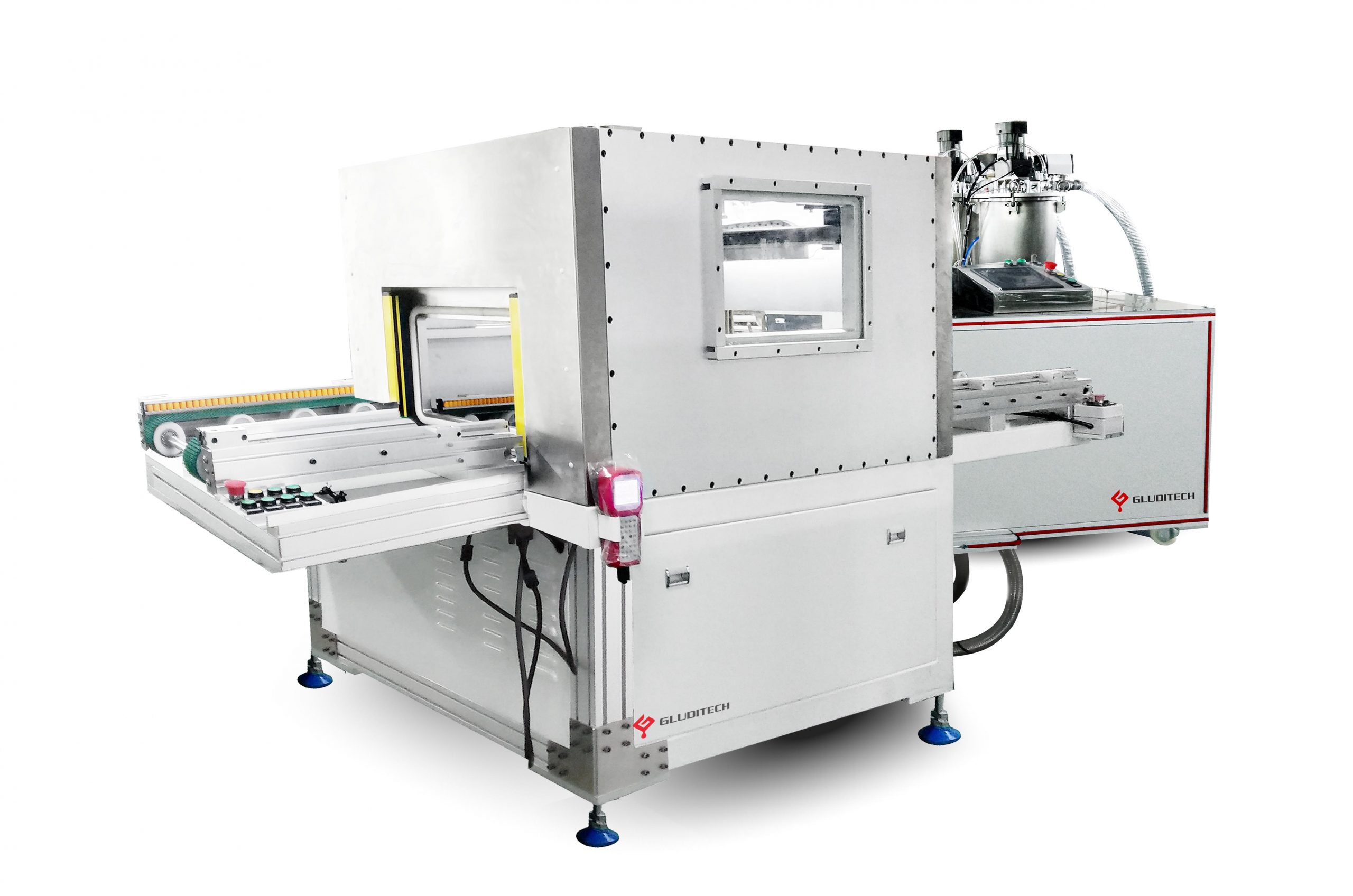  | 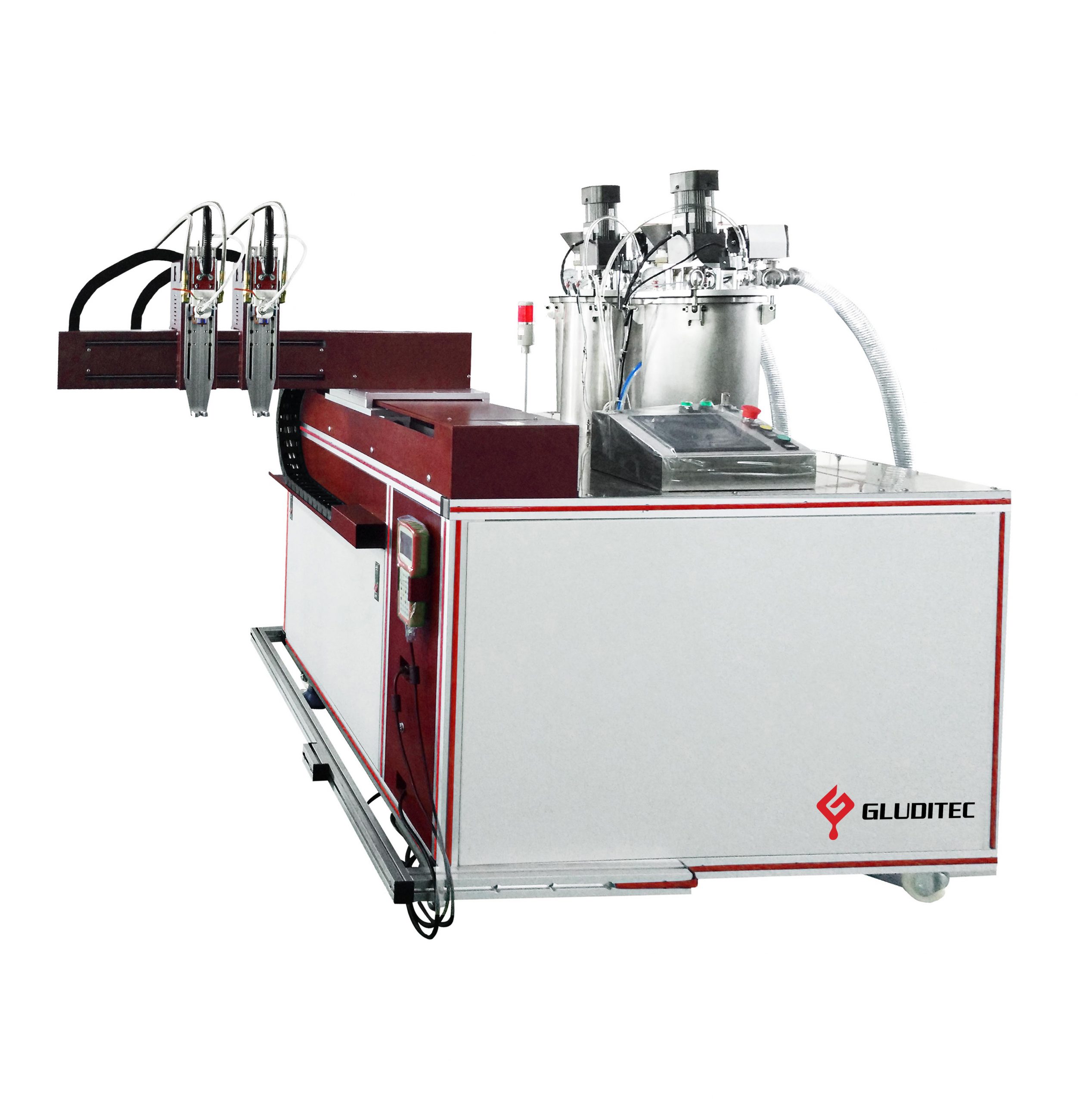  | 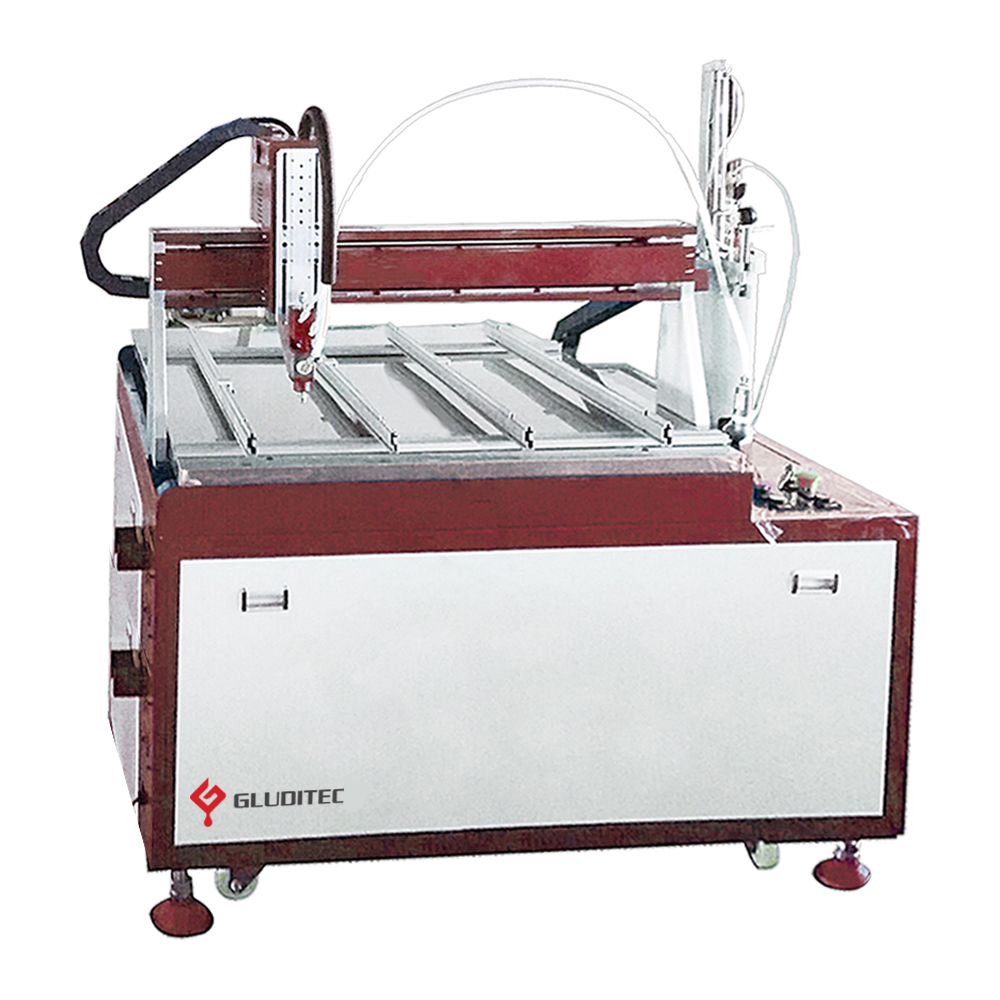  |
| Mass Production Vacuum Potting System FAC-950 | Stanalone Vacuum Potting System FAC-600 | Two-part Meter-mixing and Dispensing System – FAD-680 |
Prostech understands the technical issues related to adhesive application. We offer comprehensive solutions, including consulting, materials, and automated adhesive application equipment. We have a global warehousing network to assist customers with logistics procedures. Positioned as a comprehensive supplier, Prostech is constantly striving to become a trusted partner for manufacturers around the world. Contact us by leaving your information below:



